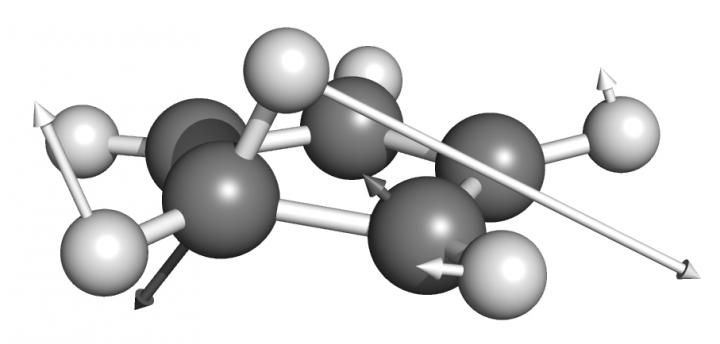Agilent Technologies' two-dimensional gas chromatography method enhances resolution of additives in gasoline
Agilent Technologies Inc. today announced a two-dimensional gas chromatography (GC) method that enhances resolution when analyzing oxygenated additives and aromatics used to improve performance and reduce emissions in gasoline.
Gasoline, a complex mixture, contains low-boiling aromatic compounds and polar additives such as ether and alcohol. Quantitative measurement of these additives using GC is difficult because there is no single column that can completely and quickly separate the target compounds from the complex hydrocarbon matrix. Two-dimensional GC solves this problem by coupling two GC columns, each with different selectivity. Unresolved analytes eluting from the first column transfer to the second column, where complete separation occurs.
Agilent application chemists used an Agilent 6890N GC system equipped with a Deans switch to heart-cut the unresolved analytes in the gasoline matrix. This plumbing design makes it easy to determine cut times, allowing easy method setup. The switch also improved performance by eliminating carryover and minimizing peak tailing for very polar compounds. This allows greater confidence in results for low concentrations of polar additives. Moreover, the Agilent 6890N's electronic pneumatics control provided retention time precision that allowed narrow cut times for enhanced resolution and a backflushing technique for faster analysis time.
System calibration and quantitative results demonstrated excellent performance. The two-dimensional GC method complies with European Standards EN 13132 for oxygenate additives in gasoline and EN 12177 for benzene in gasoline.
For further information, request Agilent application note "Two-Dimensional Gas Chromatographic Analysis of Oxygenates and Aromatics in Gasoline Using a Heart-Cutting Technique," Agilent publication number 5988-6696EN. This note is available without charge from any Agilent sales office or Agilent's Web site at www.agilent.com/chem.
Organizations
Other news from the department research and development

Get the chemical industry in your inbox
By submitting this form you agree that LUMITOS AG will send you the newsletter(s) selected above by email. Your data will not be passed on to third parties. Your data will be stored and processed in accordance with our data protection regulations. LUMITOS may contact you by email for the purpose of advertising or market and opinion surveys. You can revoke your consent at any time without giving reasons to LUMITOS AG, Ernst-Augustin-Str. 2, 12489 Berlin, Germany or by e-mail at revoke@lumitos.com with effect for the future. In addition, each email contains a link to unsubscribe from the corresponding newsletter.
Most read news
More news from our other portals
See the theme worlds for related content
Topic world Gas chromatography
Gas chromatography is an essential method in analytical chemistry for the separation and analysis of volatile compounds. Due to its high resolution and sensitivity, it has become firmly established in areas such as environmental analysis, food chemistry or forensic science. GC provides precise and reliable results and enables deep insights into the chemical composition of samples.

Topic world Gas chromatography
Gas chromatography is an essential method in analytical chemistry for the separation and analysis of volatile compounds. Due to its high resolution and sensitivity, it has become firmly established in areas such as environmental analysis, food chemistry or forensic science. GC provides precise and reliable results and enables deep insights into the chemical composition of samples.
Last viewed contents
Current_crowding

New algorithm finds the optimal bond breaking point for single molecules
Human_chorionic_gonadotropin
Reverse_transcriptase_inhibitor




























































